About Cederberg Wilderness Area
The Cederberg Wilderness Area lies some 200 km north of Cape Town. This vast area in the Cederberg region stretches from the Middelberg Pass at Citrusdal to north of the Pakhuis Pass at Clanwilliam, encompassing some 71 000 ha of rugged, mountainous terrain.
Did you know? The gorgeous Cederberg Mountains are only about 2.5 hours' drive north of Cape Town. Trails on the Cederberg Heritage Route, as there are a number, start from Clanwilliam. It is a challenging, beautiful terrain, most of it designated Wilderness Area – read: wild, undisturbed, beautifully preserved with rather poor roads and very limited overnight accommodation.
The Cederberg was proclaimed a wilderness area in 1973, and as such enjoys the highest possible conservation status. The Cederberg is renowned for its spectacular landscapes and rock formations, as well as its namesake, the increasingly rare Clanwilliam cedar tree.
The Cederberg mountains are part of the Cape folded mountain series and consist mainly of Table Mountain sandstone. Weathered sandstone formations, most notably the Wolfberg Arch and the Maltese Cross, are typical of the Cederberg. The mountains fall within the catchment area of the Cape fynbos region, and are managed as a source of water.
Winters in the Cederberg are cold and wet, while summers are warm and dry. The most rain falls between May and September, and it often snows in the higher parts. In the winter, night temperatures drop sharply and heavy frost may occur. In summer temperatures may reach as high as 40°C. Lightning is the most common cause of periodic veld fires. South-easterly winds predominate in the summer and also contribute to the high veld fire risk.
Vegetation is predominantly mountain fynbos. The lower slopes support laurel protea, silky conebush, sand olive and yellow daisies, with wild olives and mountain maytenus on the rocky outcrops. Waboom veld also occurs at this lower altitude. The eye-catching purply-blue ridderspoor, as well as rooibos tea and buchu grow against the lower cliffs.
Higher up one finds fynbos restio veld, with red disas in abundance along streams on the plateau. The Clanwilliam cedar grows in the so-called cedar zone against cliffs and overhangs at altitudes of more than 1 000 m above sea level. In the wetter ravines red and white els, yellowwood, hard-pear and Cape beech occur, while wild olive, silky bark and spoonwood prefer dryer kloofs. The endemic snow protea is perhaps the most attractive plant on the highest peaks. It is very scarce, and is only found at a few sites in the wilderness area.
Baboons, dassies, grey rhebok, klipspringers, duiker and grysbok are fairly common here. Although porcupine, honey badger, Cape clawless otter and aardvark occur here, they are seldom seen. The leopard is the Cederberg's largest predator, and is fairly common although very shy. Smaller predators include African wild cat, lynx, bat-eared fox, aardwolf and Cape fox. The small grey mongoose and striped polecat are often seen. Various interesting rodents occur, including spectacled dormouse.
More than 100 bird species occur here, with black eagle, rock kestrel and jackal buzzard the most common raptors. The armadillo lizard is one of the endemic reptiles occurring in the Cederberg. About 16 snake species are found here, the most common being berg adder, puff adder and black spitting cobra. The Clanwilliam yellow fish, Clanwilliam red fin minnow and fiery red fin minnow are but some of the threatened fish species endemic to the Olifants River, which may be found in the larger rivers and streams of the wilderness area.
Conservation Programmes
Cedar trees are becoming scarcer despite the protection offered by the wilderness area. A cedar reserve of about 5 250 ha was created in 1987, in an attempt to prevent the extinction of these trees. Extremely hot fires which are disastrous for adult trees are limited, and instead cooler more frequent burning is practised. Cedar trees are also being cultivated and each year about 8 000 year-old trees are planted in suitable places within the reserve.
Recreation
The Cederberg Wilderness Area offers unsurpassed opportunities for recreation. In the primitive wilderness, away from city bustle, one finds space and peace. Activities which are compatible with the wilderness atmosphere, such as hiking and rock climbing, are encouraged. Various hiking routes crisscross the wilderness area (see Cederberg Wilderness Trails). These routes provide access to the wilderness, and hikers may explore the area at will. Rock climbing is popular and is permitted throughout the area, provided that rock surfaces do not become damaged. The cliffs of the Krakadouw and Table Mountain peaks are the most popular climbing sites.
There are hundreds of rocky overhangs and caves with fine examples of rock art. These paintings may be anything from 300 to 6 000 years old, and are very sensitive to damage. They are an integral part of the wilderness area's fascination and visitors should discover them for themselves. Rock art is protected by the National Monuments Act, and vandals who deface rock paintings face fines of up to R10 000 or two years imprisonment, or both.
Need to Know
WhereCederberg Wilderness Area, Cederberg Area, Olifants River Valley, Western Cape, South Africa
WhenBest during daylight hours.
OvernightStay in Cederberg Accommodation, Western Cape
Disclaimer
Please note, business details can change. While we endeavour to ensure all information provided by the service provider is correct at the time of publication, we do not assume any liability caused by errors or changes, such as price, cost, time, and location. Please check with the provider that the activity/business is still offered as described, before making any travel plans.
Feedback?
If this is your reserve, you can let us know if anything on this page is outdated or contains inaccuracies, by email. We regret, we do not have any other information, please contact the provider if you have questions.
Additional Reading
You might also be interested inGame & Nature Reserves in Western Cape
In the vicinity
Hotels & other accommodation options in Cederberg

Haus Muller
Haus Muller is situated in the historical Main Street of Clanwilliam and is within walking distance of many restaurants and shops. Treat yourself...
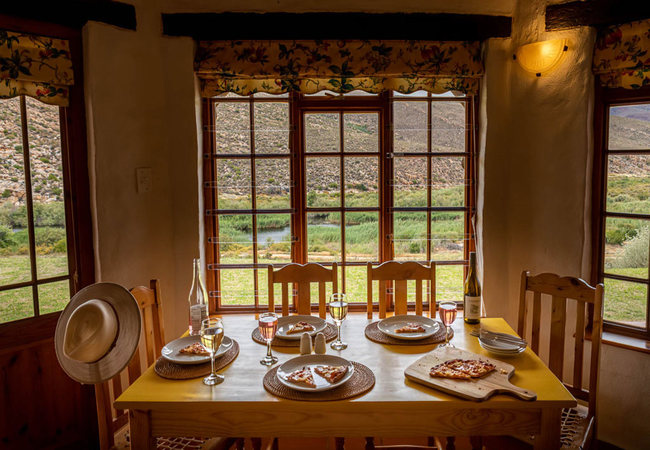
Waboomhoek House
Waboomhoek offers Cederberg accommodation at Mount Ceder in a unique location close to large pools in the perennial Groot River. Mount Ceder lies...

Murraysberg House
Murraysberg House is a two bedroom self-catering home with a spacious living area, a fully equipped kitchen, inside and outside braai as well as ...

Tafelberg House
Tafelberg House is a holiday home in Cederberg Park, a popular base for hiking, mountaineering and exploring. Splash around in the crystal-clear ...

Cape Canary Cabin
Cape Canary is a cosy self-catering eco-cabin perched on the side of the mountain, with sweeping views down the valley. This cabin features a pri...

Lebanon Citrus Resort
A quiet and peaceful small private resort consisting of a self catering cottage and 3 self catering rondawels all situated on the water's edge. ...

Mount Ceder Camping
Mount Ceder Camping offers accommodation in three private camp sites in Cederberg. The Cederberg region is only two and a half hours from Cape To...

Tortoise Terrace
If you are looking for a quiet bush break without the hassle of having to lug your camping gear with you, then The Storytellers glamping experien...
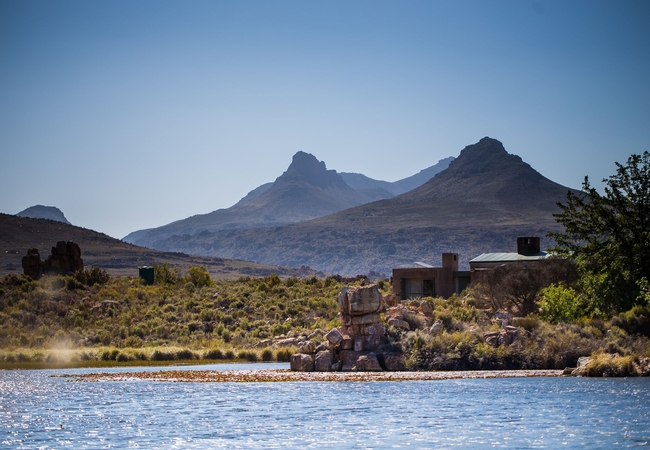
Apollo At Cederberg Park
Apollo is a getaway on the Kromrivier Farm approximately 250km north of Cape Town. Surrounded by fynbos and majestic orange rock formations, this...

Boskloof Swemgat
The farm Boskloof Swemgat is situated in the Boskloof valley, a magnificent unspoiled area, bordering on the Cederberg Wilderness Area. The accom...

De Pakhuys Glamp and Camp
De Pakhuys Glamp and Camp offers the most centrally located accommodation in Rocklands, South Africa. Nestled in the picturesque Agter-Pakhuis Va...

Nenna se Huis
Nenna se Huis is a very charming cottage with a vintage but homely feel. This cottage has one bedroom furnished with a double bed. There are an a...

Piekenierskloof Mountain Resort
Situated in Citrusdal, Piekenierskloof Mountain Resort offers comfortable accommodation for up to 140 guests. You can play mini-golf at this reso...
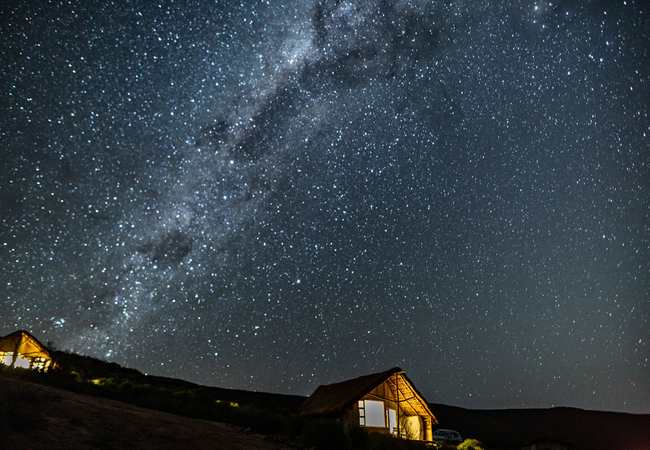

Hangnes Cottage
Hangnes Cottage sleeps six guests in two bedrooms. The cottage has a fully equipped kitchen and a comfortable lounge with a fireplace. Outside th...

Breekkrans House
Surrounded by fynbos and majestic orange rock formations, Cederberg Park is considered a popular base for hiking, mountaineering and exploring. S...

Puntjie House
Puntjie House is situated at the end of the Tuinskloof ridge and offers Cederberg accommodation at Mount Ceder. It is a great wilderness area wit...

Kamferboom House
Kamferboom House offers Cederberg Accommodation at Mount Ceder and is within easy walking distance from the main reception and restaurant. Mount ...
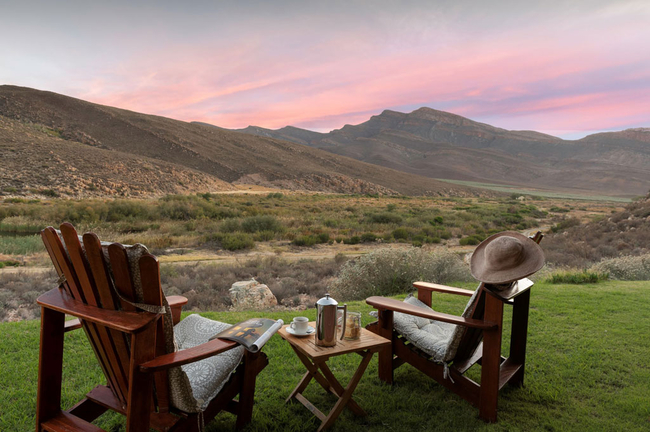
Mount Ceder Lodge
Mount Ceder is situated in a valley surrounded by mountains on the farm Grootrivier, next to the main route through the Cedarberg, approximately ...

Fivaz se Huis
Fivaz se huis at Boskloof Swemgat is situated in the Boskloof valley, a magnificent unspoiled area. The Jan Dissels River flows through the valle...

Pendoornkraal Guest Farm
Pendoornkraal Farm offers a tranquil retreat in the heart of the Cederberg wilderness. Whether you're seeking a quick weekend getaway or an exten...

Kromrivier Cederberg Park
Cederberg Park is located on Kromrivier which is a working farm with a child-friendly farmyard in the heart of the Cederberg. Today, Kromrivier R...

Sneeuberg @ Cederberg Park
Sneeuberg House on the Kromrivier Farm approximately is surrounded by fynbos and majestic orange rock formations. Splash around in the crystal-cl...

Clanwilliam Hotel
Ensconced in the magical Oliphant's River Valley, Clanwilliam Hotel is situated off the beaten track. Only two hour's drive from Cape Town, the h...

Yellow Aloe Guesthouse
Yellow Aloe Guest House is an upmarket, country-chic space born out of a love for the countryside and the town of Clanwilliam in particular. The ...

Gustav se Huis
Gustav sleeps eight guests in four bedrooms. Two rooms are furnished with a double bed and two rooms are furnished with twin beds. The kitchen is...
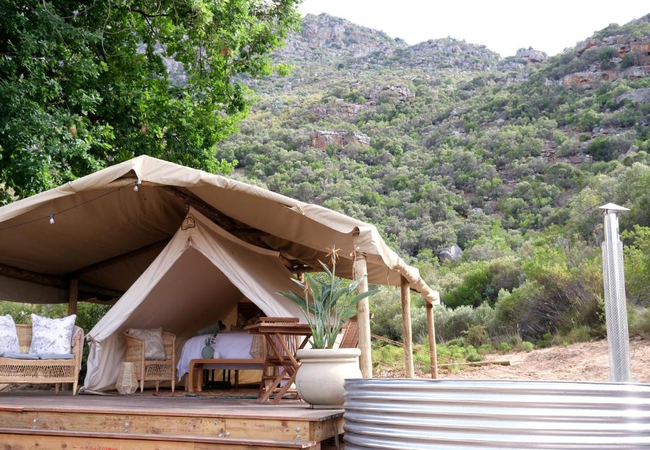
Leopard Valley Glamping
Leopard Valley Glamping Tents offers glamping accommodation in a peaceful valley between Citrusdal and Clanwilliam. The glamping tents are each ...

The Longhouse Guesthouse
The charming Longhouse Guesthouse is the ideal place from where to explore the village of Clanwilliam, the rugged beauty of the Cederberg or the ...

Enjo Nature Farm
You will find Enjo Nature Farm far from the main tourist tracks in the wild and unspoiled Biedouw Valley of the Cederberg Mountains. The Valley i...
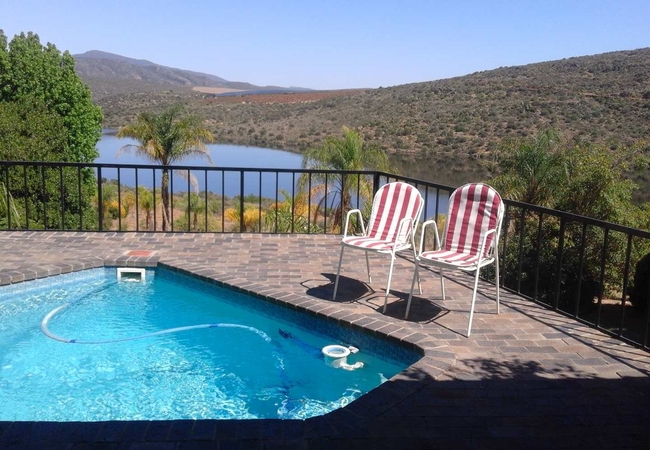
Rondegat on Clanwilliam Dam
Relax in comfortable self catering cottages overlooking the scenic Clanwilliam Dam and majestic Cederberg. The comfy accommodation ranges from tw...

Dassie Den
Dassie Den boasts beautiful views. The carpeted, luxury tent is comprised of three rooms which are furnished with double, single and bunk beds. T...

Sewefontein Homestead
Sewefontein Homestead offers visitors the opportunity to stay on a working farm just a short drive from Citrusdal. Sewefontein Guest Farm is the ...

De Pakhuys
Nestled in the picturesque Agter-Pakhuis Valley, 26 km from Clanwilliam, you will find De Pakhuys Guest Farm, offering a choice of four self-cate...

Petersfield Mountain Cottages
Petersfield is a working citrus and Rooibos tea farm overlooking the town of Citrusdal in the Cederberg area. Situated 170 km form Cape Town on t...
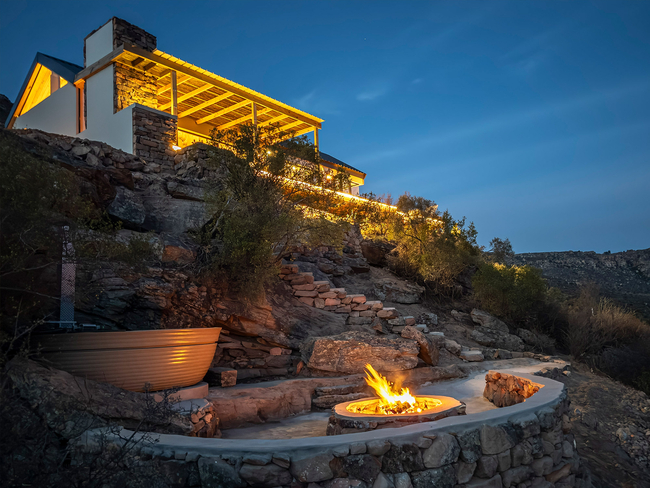
Ashanté Boutique Retreat
The Ananda Cabin offers an inviting balance of rustic charm and refined comfort. Designed for privacy and peace, this one-bedroom cabin features ...

Blommenberg Guest House
Blommenberg Guest House in Clanwilliam, offers guests comfortable accommodation in a small, attractive and peaceful town, surrounded by vineyards...

Malachite Sunbird Cabin
Malachite Sunbird Cabin offers Cederberg self catering in a one bedroom cabin located in the Cape Leopard Valley in Citrusdal. We are passionate ...
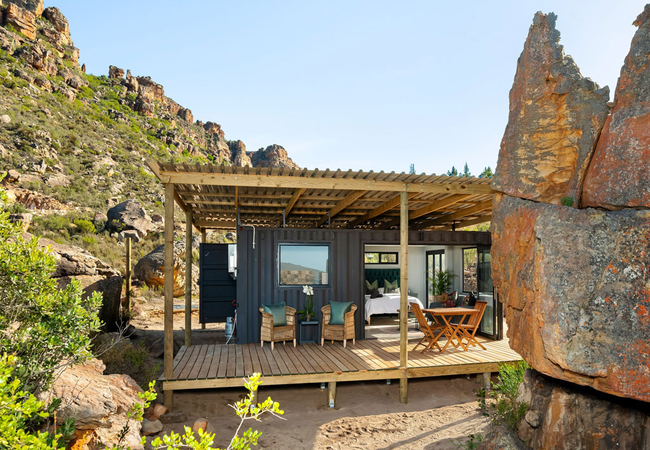
Rocklands Eco Retreat
Rocklands Eco Retreat offers a tranquil, off-the-grid getaway perched on a cliff with stunning picturesque views of the Rocklands. The eco-friend...

The Pup House
The Pup House is a two bedroom luxury self-catering chalet with is a spacious living area, a fully equipped kitchen, inside and outside braai as ...

Kleinfontein
Kleinfontein offers a warm farm-like ambiance and basic self catering in two quaint units in the Clanwilliam area just after the Pakhuis Pass. Kl...

Bushmans Kloof Wilderness Reserve
This Relais & Châteaux lodge is a wilderness sanctuary of timeless beauty, holistic healing, wellness, rich heritage and conservation. Discover a...

Cederberg Ridge Wilderness Lodge
Cederberg Ridge Wilderness Lodge offers accommodation with an authentic ambience of a modern African farmhouse. The warm and inviting interiors, ...

Olienhout Cottage
Olienhout offers Cederberg accommodation at Mount Ceder within easy walking distance from the main reception and restaurant. Nestled in a valley ...

AfriCamps at De Pakhuys
AfriCamps at De Pakhuys is located at the heart of the Rocklands in the northernmost part of the Cederberg Wilderness Area, 26km from Clanwilliam...

Langhuis at Boskloof
Langhuis is situated in the Boskloof valley, bordering on the Cederberg Wilderness Area. It offers privacy with your own rock pool and sleeps fou...

Winterbach House
Winterbach House is a two bedroom luxury self-catering chalet with is a spacious living area, a fully equipped kitchen, inside and outside braai ...

Red Fin Cottage
A serene getaway in the picturesque Koue Bokkeveld, where tranquility meets the beauty of nature. Featuring a cozy cottage with two en-suite bed...

Taaibos House
Taaibos House sits next to the Groot River, enjoying a view over the river. Enjoy Cederberg accommodation at Mount Ceder, a great wilderness area...

Cape Sugarbird Cabin
Cape Sugarbird is a spacious self catering eco-cabin offering Citrusdal accommodation. The cabin is perched on the edge of a waterlily pond with ...
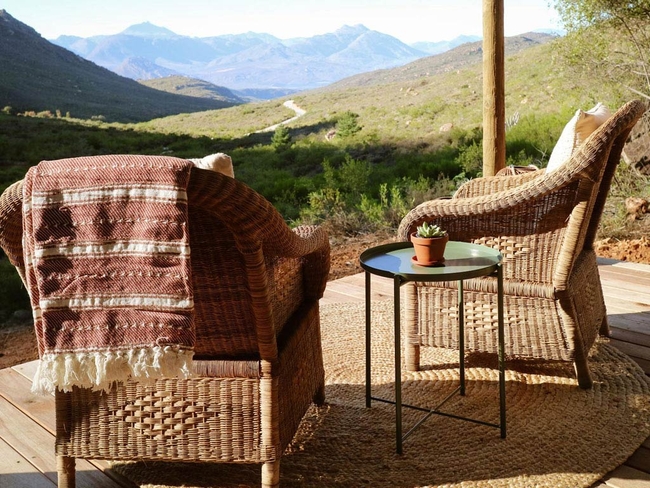
Leopard Valley Eco Retreat
Leopard Valley is an Eco Retreat nestled in a peaceful valley between Citrusdal and Clanilliam.There are various cabins crafted from used shippin...

Blinkberg House
Blinkberg House offers Cederberg accommodation nestled on the slopes of Tuinskloof ridge at Mount Ceder. Mount Ceder which lies within easy reach...
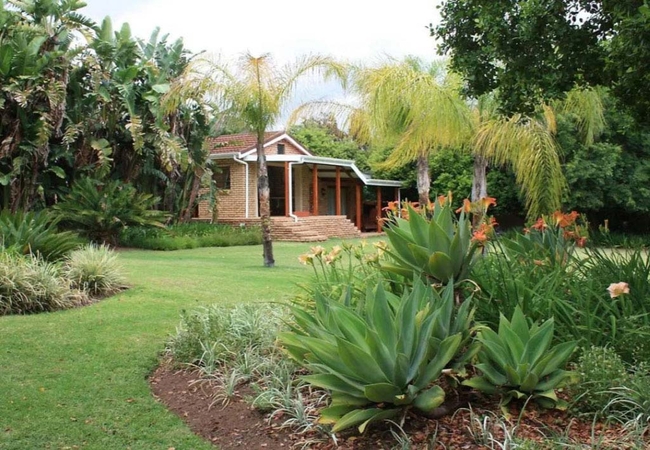
Aan d' Oewer B&B
Aan d' Oewer B&B is set in a beautiful lush garden with the Piekenierskloof mountains as the backdrop. Guests have a choice of rooms each with a ...
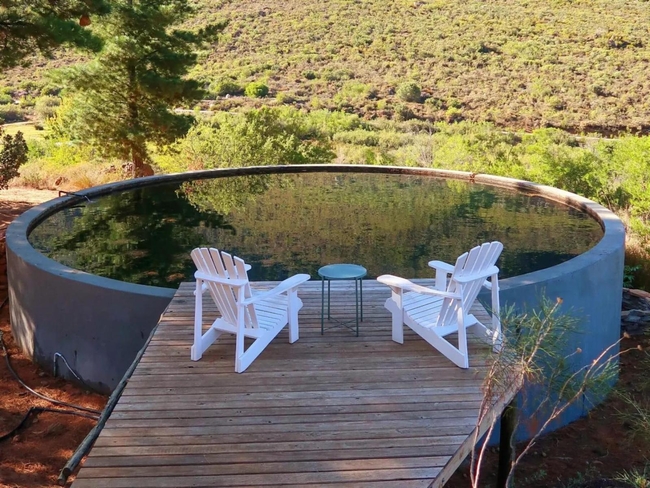
Verreaux's Eagle
Verreaux's Eagle is a cosy self-catering eco-cabin offering Citrusdal accommodation perched on the side of the mountain, with sweeping views down...

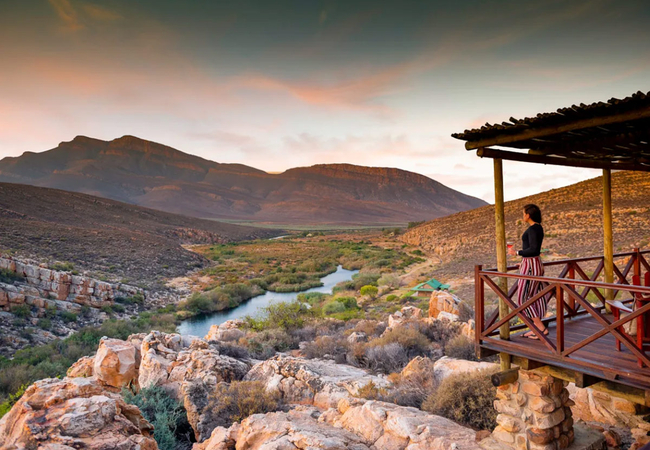
Klipbokkop House
Klipbokkop House at Mount Ceder offers Cederberg accommodation with a magnificent 360 degree view of the surrounding landscape. Mount Ceder lies ...

Kagga Kamma Nature Reserve
Kagga Kamma Nature Reserve is located in an untouched wilderness area near Ceres, renowned for its scenic beauty and dramatic rock formations typ...

Kareeboom House
Kareeboom House offers Cederberg Accommodation at Mount Ceder and is located at the foot of the surrounding mountains. Nestled in a valley of the...

Suikerberg @ Cederberg Park
Suikerberg House is a holiday home located on the Kromrivier Farm approximately 250km north of Cape Town. Surrounded by fynbos and majestic orang...
Things to do in the area

Cederberg Private Cellar
Cederberg Wines are located on the highest lying vineyards in South Africa and their unique location adds something extra special to their wine.W...

Cederberg Astronomical Observatory
In the early 1980s, a British astronomer named Peter Mack, who was working for the SAAO (South African Astronomical Observatory), visited the Ced...

Maltese Cross Walk
In order to walk to the Maltese Cross in the Cederberg you will need to collect a permit which you can do at the Dwarsdrivier Farm, alternatively...

Cederberg Oasis MTB Route
There is nothing more beautiful than riding until your heart is content in the beautiful Cederberg Wilderness Area. This is an intermediate route...

Algeria Forest Station Short Walks
Start: Algeria Forest Station (Cape Nature's Cederberg office), central CederbergFinish: Algeria Forest StationDuration: variousFitness: moderate...

Sevilla Rock Art Trail
Start: Traveller's Rest farm, CederbergFinish: Traveller's Rest farmDuration: 4 km, roughly 3 hours, 9 different rock art sitesFitness: easy, goo...

Pakhuis Trail
Start: Pakhuis PassFinish: Pakhuis PassDuration: 3 nights, 4 days, 40 kmFitness: moderate to difficult; whilst there is no scrambling involved th...

Middelberg Waterfall Walk
Start: Algeria forest station campsiteFinish: Algeria forest station campsiteDuration: 6 km, roughly 3 hours return (but allow for time at the wa...

Pakhuisberg Day Walk
Start: Kliphuis campsiteFinish: Kliphuis campsiteDuration: 13 kmFitness: moderate to difficultOur tip: This is one of the routes mapped on the ne...
Noteworthy attractions

Groot Winterhoek Wilderness Area
Groot Winterhoek Wilderness area, with its extraordinary rock formations and popular hiking routes, lies about 120 km north of Cape Town in the W...

Olifants River Valley Wine Route
The Olifants River wine route starts at Citrusdal, 180 km outside of Cape Town and meanders along the river for 120 km until it reaches Lutzville...

Beaverlac Nature Reserve
This little talked about gem lies just 25 kilometres outside of Porterville, roughly 2 hours from Cape Town, in the Olifants River Mountains in t...

Bushmanskloof Wilderness
Bushmanskloof Wilderness, lying in the northern Cederberg wilderness roughly 270 kilometres from Cape Town, is a South African Natural Heritage S...

Matjiesrivier Nature Reserve
The beautiful Matjiesrivier Nature Reserve lies on the eastern edge of the Cederberg Mountains, managed as part of the greater Cederberg conserva...

Pakhuis Conservancy
Set on the northern edge of the Cederberg Wilderness area, roughly 300 kilometres from Cape Town and close to the town of Clanwilliam, the Pakhui...

Katbakkies Pass
Katbakkies Pass has what is commonly known as a descriptive name. Others in the area include Houdenbek and Skitterykloof - although Skitterykloof...

Nieuwoudt Pass
The Nieuwoudt Pass is a dirt road that occurs roughly halfway between Citrusdal and Clanwilliam, off the N7. It is actually an alternative route ...

Pakhuis Pass
The drive from Clanwilliam to Wuppertal in the Cederberg, the incredible wild and mountainous region that attracts hikers and lies roughly three ...
Accommodation near Cederberg Wilderness Area
FIND / South Africa Accommodation / Western Cape Accommodation / Cape Town Accommodation / Olifants River Valley Accommodation / Cederberg Accommodation







